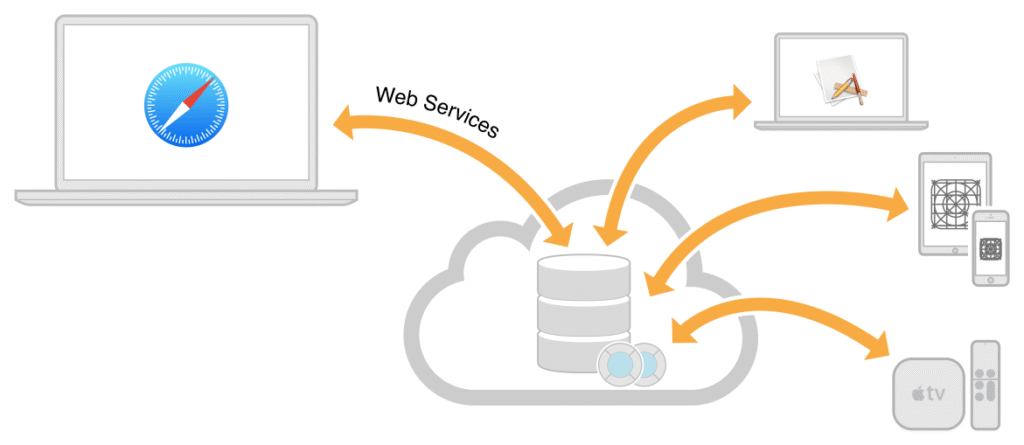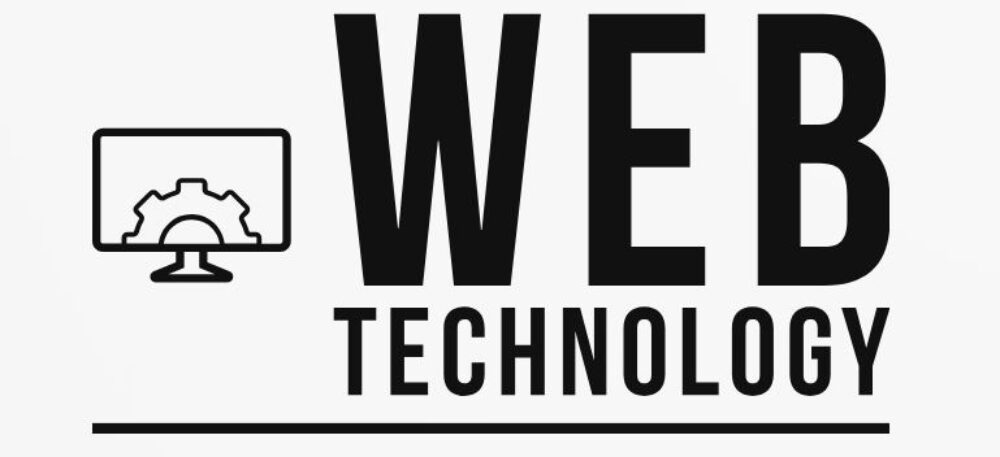
32333+
Happy Clients
All Happy Customers Enjoying our Fast & Scure WEB,IT And Also Bill services.

Introduction to WEB
In modern IT architectures, web services are the backbone of seamless communication between systems. But what exactly is a web service, and why is it so critical in software development, integration, cloud computing, and emerging trends like IoT and edge computing? In this comprehensive guide (≈ 1500 original words), we’ll answer those questions, explain uses with headings “2025” and “2026”, insert bold italic words for emphasis, and include ?‑style questions to engage your curiosity.
What Is a Web Service?

A web service is a software function or service made available over the Internet (or any network) using unique protocols, allowing one application to communicate with another regardless of platform, language, skills, or location. It typically relies on HTTP/HTTPS to exchange data in structured formats such as XML or JSON .
Thus, a web service is platform-and language-independent, enabling systems on Windows, Linux, Java, .NET, Python and beyond to interoperate—often without touching a database directly.
Key Protocols & Service Types
– SOAP (Simple Object Access Protocol)
SOAP is a standardized, XML‑based protocol that defines strict messaging over HTTP, SMTP, or other protocols. Each SOAP message uses an envelope, header, and body structure, described using WSDL (Web Services Description Language). SOAP supports built‑in logic for reliability, security (WS‑Security), addressing, and events.
– REST (Representational State Transfer)
REST is not a protocol but an architectural style with guiding principles—stateless interactions, uniform resource identifiers (URIs), layered systems, and cacheable responses. RESTful services typically use HTTP verbs (GET, POST, PUT, DELETE) and exchange data as JSON or XML. They rely on URIs to represent resources, not actions.
– Other Styles
Although SOAP and REST dominate, modern systems may use GraphQL, gRPC, Serverless Functions (AWS Lambda, Azure Functions), or Smart Web Services (services with embedded AI/inference logic).
Core Features & Characteristics
- Statelessness: Especially in REST, each request is independent. No server-side session state is needed, improving scalability.
- Interoperability: Standards like SOAP/WSDL and REST/JSON enable cross-platform consumption.
- Loose Coupling: Web services separate clients and servers, enabling modular evolution and easier maintenance.
- Reusability & Discoverability: With WSDL and UDDI or modern API catalogs, you get clear service contracts and governance.
- Security & Reliability: SOAP supports advanced WS‑Security, WS‑Reliability. REST relies on HTTPS + tokens.
- Scalability: REST fits well with load-balanced infrastructure; SOAP can be scaled as well, but with heavier overhead.
How Web Services Work?

a. Enterprise Integration & SOA
Organizations often run heterogeneous systems—legacy mainframes, CRM, ERP, and microservices. Web services enable these disparate systems to integrate under a Service-Oriented Architecture (SOA). Each capability (payment, customer lookup, order tracking) becomes a service that can be reused and composed into new workflows .
b. Mobile Apps & Web APIs
To support mobile or browser-based frontends, developers expose backend operations (login, product catalog, messaging) as lightweight REST APIs. These platforms benefit from REST’s low bandwidth and fast JSON parsing.
c. Cloud & Microservices
Breaking monoliths into microservices, each with its own data store and functionality, uses APIs to communicate over HTTP/REST or message queues. Cloud-native platforms rely on APIs for auto‑scaling, distributed deployment, and container orchestration (e.g., Kubernetes).
d. Internet of Things (IoT)
IoT devices—sensors, wearables, smart appliances—use REST web services to send telemetry or receive commands. This has driven architectures like the Web of Things, which standardize device endpoints as RESTful services for interoperability.
e. Business‑to‑Business & Partner Integration
Companies exchange data (EDI, invoice APIs, logistics tracking) through web services—often SOAP for strict validation/security (financial domains) or REST for efficiency (modern SaaS integrations).
f. Public APIs & the API Economy
Tech giants—Twitter, Google, Stripe, Twilio—expose APIs as products. Developers build new apps, and teams monetize high-value data (maps, payments, communications). Web services are the currency of ecosystems.
g. Legacy Modernization
Instead of rewriting legacy systems, enterprises wrap them in SOAP or REST services to preserve core logic while enabling new UI or integration layers. Legacy systems gain a new life with modern front-ends.
Challenges & Considerations
Performance & Bandwidth: SOAP’s XML and WS-* standards very increase payload and full complexity; REST is light but may need extra handling for versioning, state.
Security: SOAP offers highly WS‑Security features; REST relies mostly on HTTPS and token-based auth (OAuth, JWT).
Error‑Handling: SOAP has built-in fault messaging; REST may require custom error-handling conventions.
Governance & API Sprawl: Without proper planning, teams can produce overlapping APIs. Enterprise API management platforms help enforce policies.
WEB Uses in 2025
In 2025, web services continue to dominate enterprise and cloud computing. Key trends include:
→ Edge‑Native APIs
With roughly 75 % of enterprise-generated data created or processed at the edge by 2025—according to analysts—edge scenarios demand local web services to reduce latency (e.g. for autonomous vehicles, AR/VR, industrial IoT) . Web services at edge gateways relay filtered data back to centralized systems.
→ API Gateways & Micro‑gateway Growth
Modern organizations use API gateways for authentication, rate limiting, analytics, and protocol translation (REST ↔ gRPC). Micro‑gateways localized near microservices ensure local routing efficiency.
→ Real‑time Streaming & Event‑Driven Services
More systems adopt event-driven architecture (Kafka, Webhooks), turning web services into both consumers and producers of real‑time events—e.g. microservices publishing inventory updates or IoT sensors triggering analytics pipelines.
→ AI‑augmented APIs
Services are enriched with AI capabilities: e.g. vision detection APIs, natural language understanding, recommendation systems. These Smart Web Services embed logic to automate and infer without external orchestration .
→ API as a Product & Developer Experience (DX)
Platforms emphasize developer portals, SDKs, self‑service registration. Enterprises are packaging internal services as APIs to external partners, monetizing access, and enabling controlled ecosystems.
→ Hybrid Cloud Integration
Many organizations operate across public, private, and edge clouds. Web services provide the glue—legacy on-premise systems communicate with SaaS apps via REST bridges, using API management to unify governance.
Use Questions
- Need instant geo‑lookup for mobile checkout? Expose your geolocation service via REST.
- Want enterprise‑grade transactions with strict audit logs? SOAP + WSDL might suit you.
WEB Uses in 2026
Looking ahead, 2026 brings further evolution and new use‑cases:
→ Decentralized & Data‑Sharing APIs
As blockchain and permissioned ledgers mature, APIs are emerging for secure data sharing between organizations (finance, healthcare, supply chains), allowing services to validate data in a decentralized manner.
→ AI‑Masked Edge Services
APIs that run small AI models on the edge (e.g., cold‑storage voice, closed‑loop controls) become widely available—and managed like web services, with versions, usage metrics, and billing.
→ Autonomous Self‑Healable Services
Inspired by Nobel‑AI research, SmartWS with embedded inference begins diagnosing and responding to anomalies (e.g., memory pressure, traffic spikes) automatically, without manual intervention.
→ Standardization via API Standards & Models
REST and GraphQL services increasingly adopt standardized OpenAPI / GraphQL schema registries, enabling model-driven API generation across languages with unified type‑checking and contract testing.
→ 5G‑Based High Bandwidth APIs
With 5G widespread, high‑bandwidth APIs (e.g., streaming video telemetry, AR data feeds) become feasible between devices and backend services. 5G APIs and web services enable microsecond-range latencies for remote gaming, remote surgery, and industrial control.
→ API Observability, Governance & Policy Operability
In 2026, service management platforms integrate governance-as-code (policy-as-infrastructure), enabling observable, rule‑driven controls for every API (e.g., cost center, access rights, latency thresholds).
→ Auto‑Generated APIs from Low‑Code/No‑Code Platforms
Low‑code tools generate RESTful APIs automatically from UI or database models. This shifts service design from hand-crafted WSDL/Swagger to declarative models (while generating docs, SDKs, and test suites).
Summary Table
| Category | SOAP Use Case | REST / Modern API Use Case | Trend/Growth in 2025–2026 |
|---|---|---|---|
| Enterprise & Finance | Transactional services with audit & WS‑Security | Public data APIs (payments, weather, location) | Decentralized APIs, Governance-as-code |
| Legacy Integration | SmartWS at the edge, 5G streaming APIs | Legacy-to-cloud REST bridging | Auto-generated API layers for modernization |
| Mobile & Web UI | Fully documented operational contracts | CRUD APIs powering SPAs & native apps | Low‑code API engines, better DX |
| IoT / Edge | Sensor gateways using SOAP for reliability | REST-based telemetry, command/control endpoints | SmartWS at edge, 5G streaming APIs |
| AI & ML Enrichment | SOAP-based classification service calls | JSON-based inference, recommendation endpoints | AI‑masked APIs, contextual inference |
| Event / Stream | SOAP‑based polling or callback events | Webhooks, Kafka streaming, event APIs | Wrapping older systems via WSDL contract |
Conclusion
Web services, once dominated by heavyweight SOAP protocols, have evolved into a vast, lightweight, scalable, interoperable ecosystem featuring REST, gRPC, GraphQL, serverless functions, Smart APIs, and beyond. Why? Because they are the glue between:
- Legacy systems and modern clients
- Cloud-native backends and distributed front-ends
- Edge devices and central analytics
- Business logic and partner ecosystems
As of 2025, REST APIs and microservices have taken center stage in digital transformation, IoT, and AI‑augmented services—ushering in distributed, event-based, edge‑friendly architectures. By 2026, expect decentralized APIs, AI‑embedded Smart Web Services, API-as‑code governance, auto‑generated service layers, and high‑speed 5G/edge streaming.










